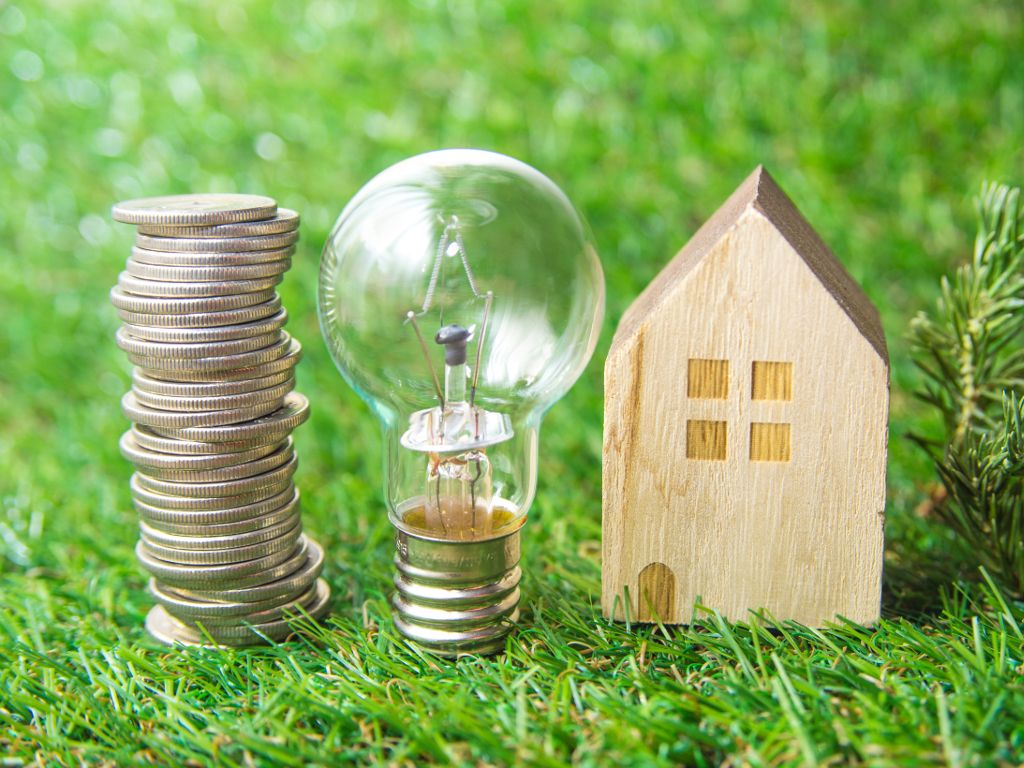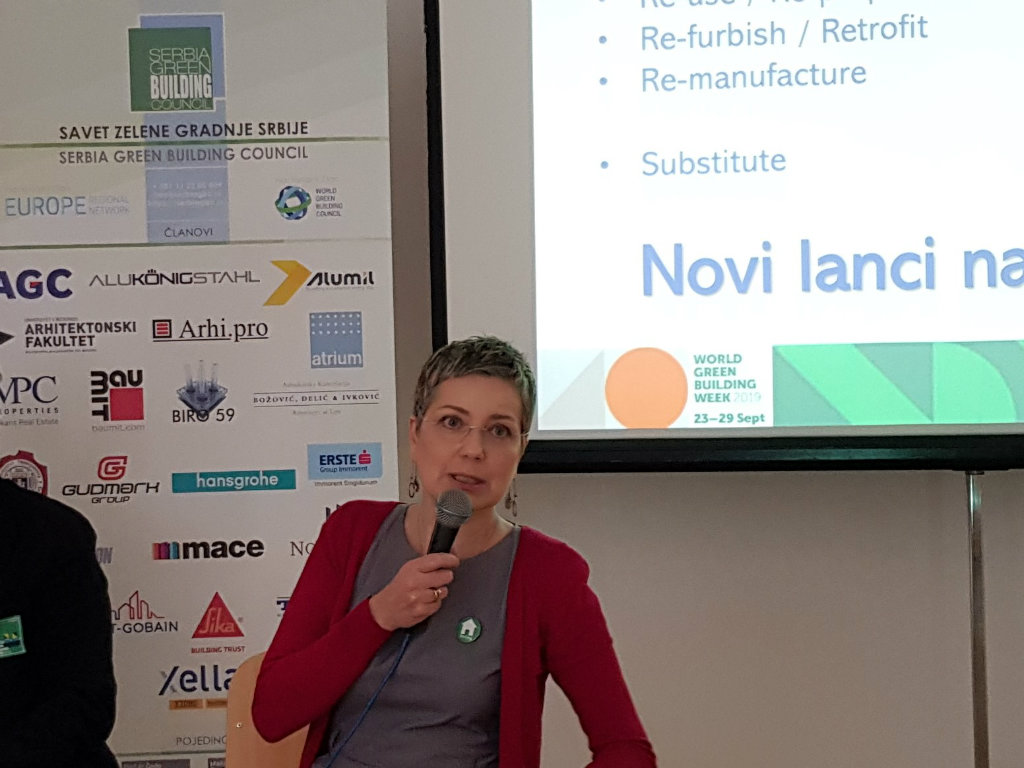Dragana Korica, Serbia Green Building Council – It is easier to sell or rent green-sustainable facilities, and they reach higher prices too
Source: eKapija
 Thursday, 24.09.2020.
Thursday, 24.09.2020.
 09:50
09:50
 Thursday, 24.09.2020.
Thursday, 24.09.2020.
 09:50
09:50
(Photo: AKIRA_PHOTO/shutterstock.com)

Dragana Korica, the Executive Director of the Serbia Green Building Council, says for eKapija that, if we want to secure the necessary developed environment for the expected populace growth, which is assumed to double in the upcoming 15 years, it is clear that things need to change.
– If we continued doing the things we do and building the way we`re used to, we would need two Earths by 2050. That is why it`s important to implement green-sustainable building. At the moment, the world`s focus, when it comes to environmental protection, is followed by a range of climate initiatives which pertain to limiting the growth of temperature, and the essence is how to reduce GHG emissions, which cause the greenhouse effect, which results in the warming. One of the key negative factors is still carbon dioxide. Cities and states seem to be competing in making announcements about efforts to reduce CO2, defining the deadlines for becoming zero-emission. Considering the statistical data that the carbon dioxide which comes from the construction sector exceeds 40% globally, it is clear how to change the situation in favor of environmental protection.
eKapija: What does green building entail?
– It entails a range of principles and standards, already known to experts, but they need to be implemented, including innovations for which the sector is a great challenge.
Switching to circular economy in construction as well, which would lead to an optimization of the necessary natural resources, while at the same time reducing the amount of waste;
Circular economy is one of the most current topics. The EU has recently adopted the Action Plan for Circular Economy, but we are also working on it here. The Ministry of Environmental Protection has recently presented the Road Map for Circular Economy. Therefore, switching to that kind of economic model in construction as well, whereby the needed natural resources will be optimized, while the amount of waste will be reduced, is not only justified, but necessary; not to mention the flaws when it comes to the treatment of construction waste. The construction sector, as one of the fastest growing sectors, and in Serbia the pandemic has only slowed down the growth, is at the same time one of the biggest producers of waste (global statistics show an amount of 1.3 billion tons a year). All this points to why it is one of the principles that need to be implemented in the sector, that is, why it needs to be transformed so that it works by the principle of a circular model. The Serbia Green Building Council, in cooperation with the CCIS and Cirekon, the partners here in Serbia, is soon to start realizing the practical part of the project of an international consortium, in the part pertaining to construction. The program aims for young engineers and final-year students to get educated about the circular model and go through practical training when it comes to the implementation of the principles.
Switching to RES, primarily for heating, would reduce the emission of carbon dioxide; choosing EPD-certified materials (materials with documents on the environmental impact); intelligently balancing between passive and active principles so that the building would function optimally in the use period with the strongest impact; implementing the life cycle standard from the planning, the design, through the execution and, later, through the use and maintenance, and eventually during the demolition. All these are principles of green-sustainable building which contribute to a positive impact of the buildings, as factors in a built environment, on the living environment.
Just like all the other standards, if the laws and regulations do not say otherwise, the ones that would contribute to green-sustainable construction are not binding, which is why the Serbia Green Building Council is working toward achieving the widest possible implementation of these standards so that they would become the New Normal.
(Photo: Sergey Nivens/shutterstock.com)

– The data available to the Ministry of Mining and Energy say that 300,000 houses in Serbia do not have thermal insulation, which is why their heating requires the spending of four to five times more energy that the EU average. The existing buildings need to be made more energy efficient, for several reasons, but the essence is that this would lead to energy savings of up to 60%. Energy consumption is not the only problem, as fossil fuels are used, which are big pollutants.
Europe is working on adopting a law on climate neutrality, which sets the goal of reducing the emission of carbon-dioxide by 55% by 2050. “We can do it”, said Ursula von der Leyen, the president of the European Commission. If we have the EU direction defined, we should recognize ourselves in this.
eKapija: Are new buildings being raised as sustainable and energy efficient?
– Since 2012 and the implementation of the energy passport, it has been confirmed that they are being built to be energy efficient. It is a well know topic even to the widest public, and not just those directly connected with the construction sector. Energy efficiency will be further raised to a higher level with the upgrade of the current regulations, which is currently being worked on. From that angle, the optimization of the necessary energy is one of the important characteristics of the concept of green and sustainable building, in terms of both the quantities (to be reduced) and the selection of the energy sources (which should be renewable).
When it comes to green-sustainable construction, it is not legally regulated this way. Instead, there are regulatory recommendations that construction activities should be carried out that way. In our market, the commercial sector is moving in that direction, as shown by the increasing number of certifications of new buildings, an international certificate as proof of green building. We see our contribution there as well, as we transfer the knowledge we get as a member of the Europe Regional Network of the World Green Building Council (ERN – WorldGBC), providing information about the expansion of this form of building and by promoting the activities of our members, whether they are educators (faculties and professionals), producers, designers, builders, certifiers or, in this case, investors. We premiered great examples of our members at our last year`s conference as part of the celebration of the World Green Building Week, as one of the 111 events visible on the world map. These are two individual facilities; one which is at the very top in the EU when it comes to the net zero topic and even exceeds them, as it is energy-positive; whereas the other, with the implementation of some of the green-sustainable principles, won the prestigious International BIG SEE award this year. There is also the Usce 2 Tower, with an innovative model of natural ventilation of rooms, which considerably reduces the energy requirements.
I can conclude that we have started moving in that direction and that we now need to work on accelerating.
eKapija: What is the advantage of sustainable buildings for the users and what for the investors?
– There`s an interest in them for both, as the economic advantages are unquestionable, but other advantages, outside of that sphere, pertaining to social benefits, mustn`t be overlooked.
Globally, the demand for such facilities is increasing. They are more likely to be sold and rented, the prices are better, and the subsequent maintenance is less expensive. We have already shown this at our events by presenting concrete examples, but we always like to repeat it, as it is the only way to make sure that the right choice is made. At the same time, these facilities make the least impact on the environment. Many cities in the world set requirements for investors, especially for larger facilities, which have a big impact on the living environment and the built environment. They place conditions whereby they have to work under one of the recognized green building certificates, while obliging them to prove it through measuring once the facility becomes functional. As a member of the World Green Building Council, this year, at the webinar during the traditional World Green Building Week (the last week of September), we will present one such tool which enables cities and businesses to be included in global trends of transformations toward a climate neutrality, while also improving their portfolio. There are justified reasons why Copenhagen, London, Paris, Helsinki, Oslo, New York, Tokyo, Toronto... but also finance corporations, banks, real estate agencies, investors, contractors, consultants, designers and many others have already signed the “Commitment”.
Reduced emission of carbon dioxide, reduced pollution, quality air for the residents of developed areas, adequate comfort (thermal, visual, acoustic and also pertaining to the quality of air) in the space we spend more than 80% of our time in, which secures health and satisfaction, and with that productivity as well, all this is recognized by companies which choose such spaces, as well as investors which follow the market. This is increasingly recognized in Serbia as well.
(Photo: Lična arhiva)

– I would like to emphasize that these two concepts should be kept separate, as energy optimization in the construction sector is only a part of the much bigger essential concept of green-sustainable building.
There are currently no regulatory benefits for either type of building.
Financially, the state is preparing to implement an energy efficiency fund, which would enable the repair of residential facilities. So far, such initiatives, from the existing fund for that purpose, have been carried out for certain public facilities, and the plan is for them to be carried out for all public facilities.
Also, there are financial benefits offered by commercial banks (two at the moment), in the form of grants, which are supported by financial corporations. The benefits are reflected in the choice of the offered products from the Technological Selector, defined as energy efficient products.
When it comes to green-sustainable building, globally, there are various examples of financial and regulatory forms of support and benefits. We talk about this at our events, and we are also looking at some concrete activities lying ahead, which should support this.
eKapija: What needs to be done in order for there to be more sustainable buildings?
– Knowledge about the advantages, both the economic and the social ones, should be available to everybody. There need to be constant efforts toward this, and the media play an important role there, by raising the general awareness that this is an inevitable direction, because we only have one planet and our air is overly polluted, because the climate is changing and we need to adjust our building practices with a view to what the weather will be like in 30 or 40 years. Each individual, profession, business and decision-maker needs to be educated, and I emphasize that everyone, from their angle, can contribute to the interest of a sustainable survival, but we can only achieve it by working together. Professionals should find innovative solutions, businesses should develop in that direction and make investments as they benefit them, decision-makers should implement regulatory changes with support, which doesn`t always have to be financial. All this can incite green-sustainable building, which we all need.
Companies:
 Savet zelene gradnje Srbije
Savet zelene gradnje Srbije
Tags:
Serbia Green Building Council
Europe Regional Network of the World Green Building Council
ERN WorldGBC
Ministry of Mining and Energy of Serbia
Ministry of Environmental Protection of Serbia
Dragana Korica
circular economy
green building
sustainable buildings
pollution
energy efficient building
energy efficiency fund
reduced pollution
quality air
energy passport
special edition newsletter
special edition newsletter real estate and construction
real estate and construction
real estate and construction future projects for new business opportunities
Comments
Your comment
Most Important News
Full information is available only to commercial users-subscribers and it is necessary to log in.
Follow the news, tenders, grants, legal regulations and reports on our portal.
Registracija na eKapiji vam omogućava pristup potpunim informacijama i dnevnom biltenu
Naš dnevni ekonomski bilten će stizati na vašu mejl adresu krajem svakog radnog dana. Bilteni su personalizovani prema interesovanjima svakog korisnika zasebno,
uz konsultacije sa našim ekspertima.


 Izdanje Srbija
Izdanje Srbija Serbische Ausgabe
Serbische Ausgabe Izdanje BiH
Izdanje BiH Izdanje Crna Gora
Izdanje Crna Gora


 News
News






